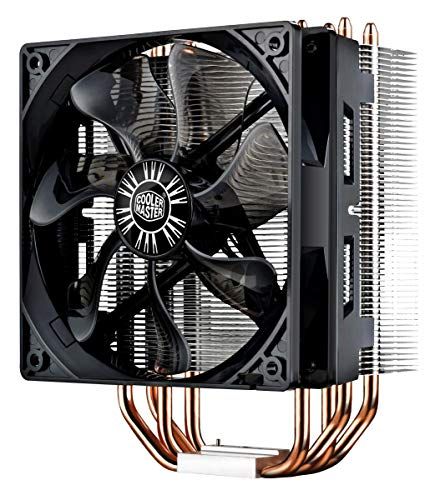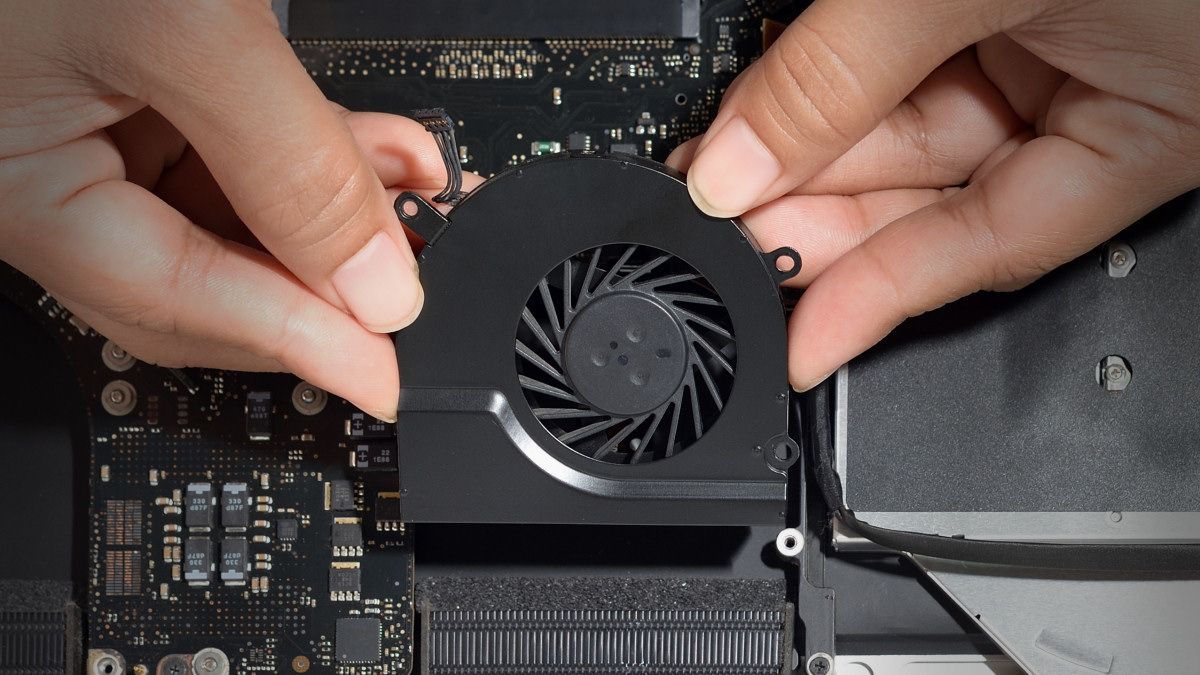Computer fans can be annoying---they're often noisy, and they collect dust. While most desktop and laptop computers rely on fans, smartphones and tablets don't. Why? We'll explain.
Fans Help Remove Heat, Especially in Desktops
All electrical current flowing through a conductor creates some amount of heat. Modern PCs include many parts that generate heat, such as the power supply. But by far, CPUs and GPUs produce the most heat in a computer system. For now, let's focus on the CPU as an example.
Modern x86-64 desktop CPUs consume a lot of power (commonly anywhere between 100 and 300 watts), so they generate a lot of waste heat. That needs to be removed from the CPU itself so the chip doesn't malfunction.
One of the easiest ways to remove heat is by using a heat sink and air. The heat sink conducts the heat from the CPU and into metal fins with gaps between them. A fan then pulls air through the fin gaps, transferring heat from the fins to the air. A second fan then usually blows that hot air out of the computer case while sucking cooler air in from outside to repeat the cycle.

Cooler Master Hyper 212 Evo CPU Cooler
A popular air cooler for desktop PCs.
Even if your system uses liquid cooling, you'll still need a fan to help transfer heat from the liquid coolant into the air once you pump it away from your hard-working chips.
Why Don't Smartphones Use Fans?
Tablet and smartphones purposely use CPUs (usually in SOC form) that don't produce as much heat as desktop and laptop CPUs. A typical ARM CPU used in a mobile device might consume about 2 watts at maximum load. As a result, they don't need fans for cooling. The heat they produce is low enough that it can be passively radiated away through the body of the device.
Since CPUs and GPUs in pocket-sized devices need to run off of small batteries, they can't be as power-hungry as their desktop counterparts. So historically, pocket-sized computer devices have used less computationally powerful chips (that also consumed less electric power) compared to their desktop counterparts.
More recently, with the rise of SOC architectures such as Apple's M1 series, mobile CPUs are beginning to match and even exceed some desktop PCs while using less power---while still not requiring cooling fans. (It's worth noting that, while the M1 MacBook Air does not have a fan, the M1 MacBook Pro does have a fan, allowing it to achieve higher top speeds for improved performance at the cost of some extra heat, which it needs the fan to take care of.)
So the question remains, what is it about the new era of mobile ARM CPUs that makes them use less power and produce less heat than traditional x86-64 desktop and laptop CPUs?
As it turns out, ARM chips have several power-efficiency advantages over legacy x86 designs. Among them, they use a reduced instruction set, so they often use fewer transistors (each transistor uses extra power). They also have a built-in sleep mode that allows the chip to consume basically no power when idle.
In contrast, x86 CPUs have complex designs that incorporate legacy features for backward compatibility extending all the way back to the 1970s, so they aren't designed from the ground up to be as efficient as possible by modern standards (although, to be sure, Intel and AMD try as hard as they can). They also aren't designed to sleep when not in use in the same way as an ARM chip, so they are always drawing power, even when idle.
Most importantly, when desktop PCs are hooked up to wall current, they're free to use massive amounts of electricity compared to pocket-sized devices. There may always be envelope-pushing monsters that need air cooling of some kind.
The legacy of backward compatibility found in Windows PCs comes at a cost, and Apple and Chromebook vendors are pushing ahead with more power-efficient computers that rarely need to rely on cooling fans. If Windows on ARM ever becomes viable, we may see similar performance from Windows PCs. Cool times ahead!


